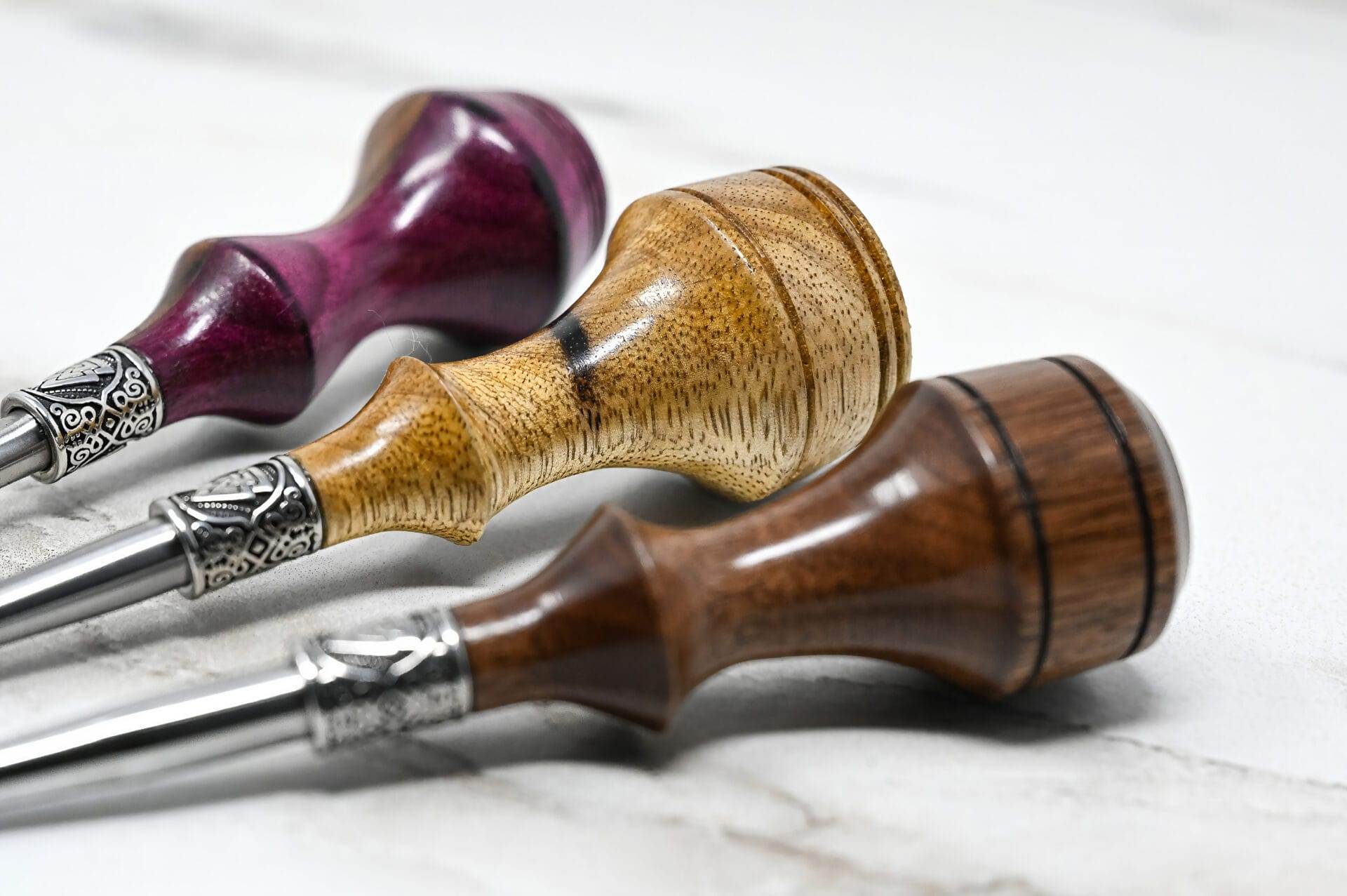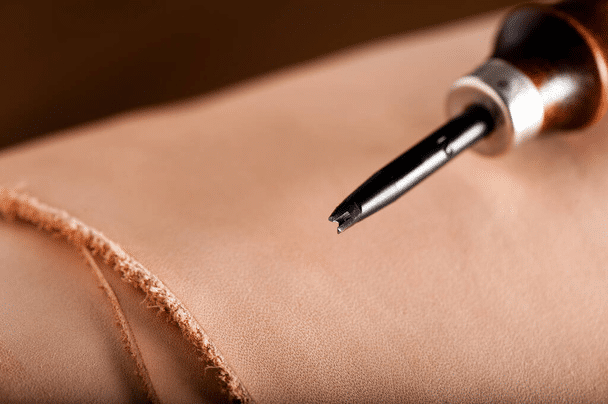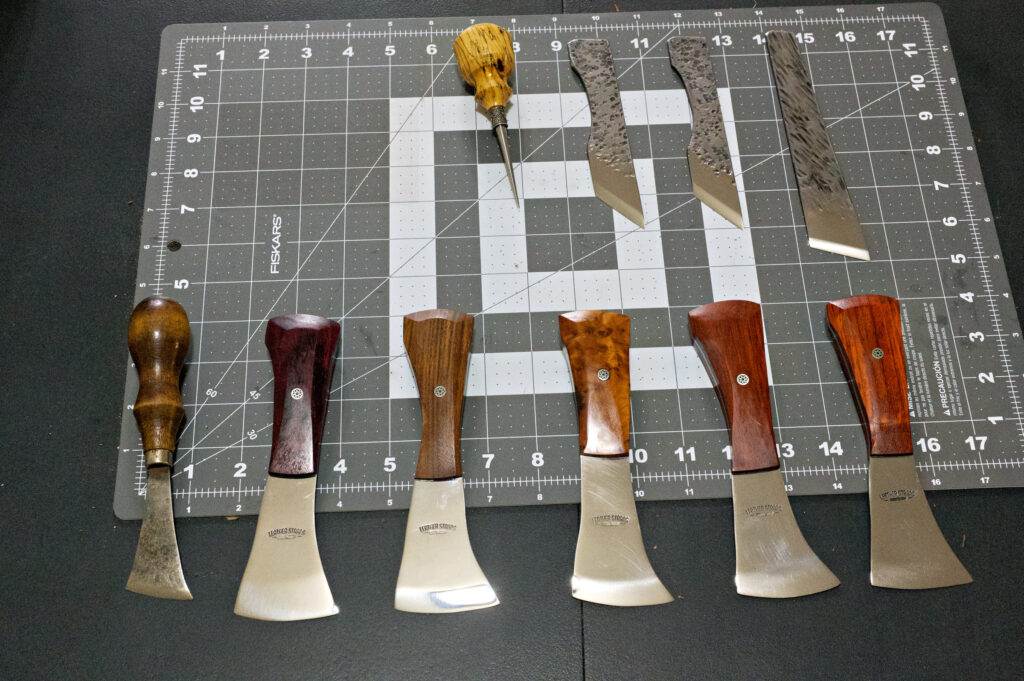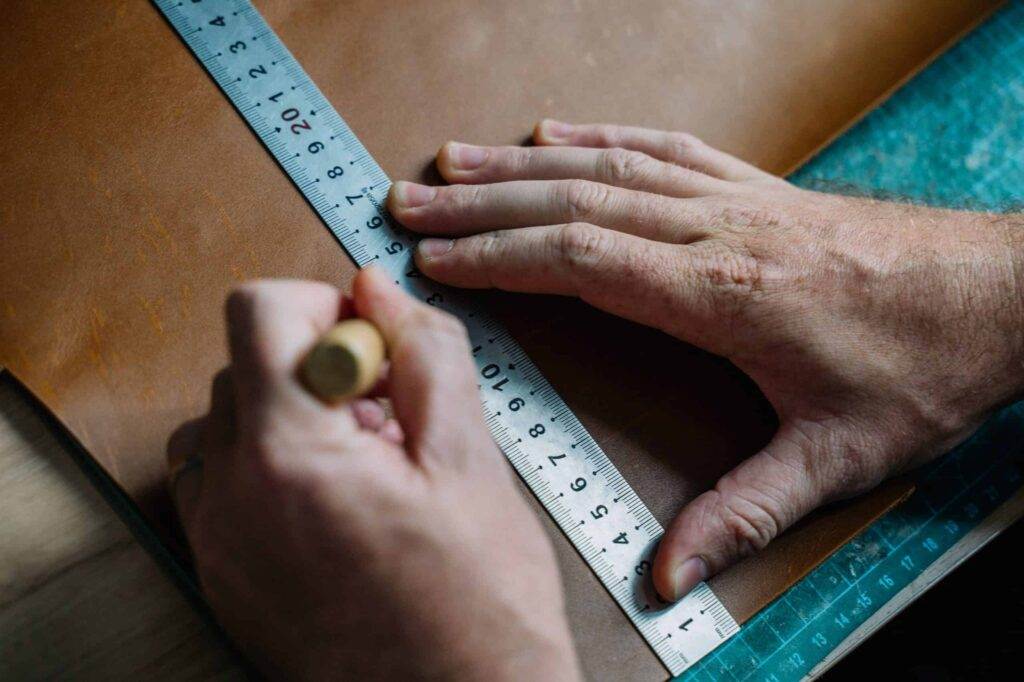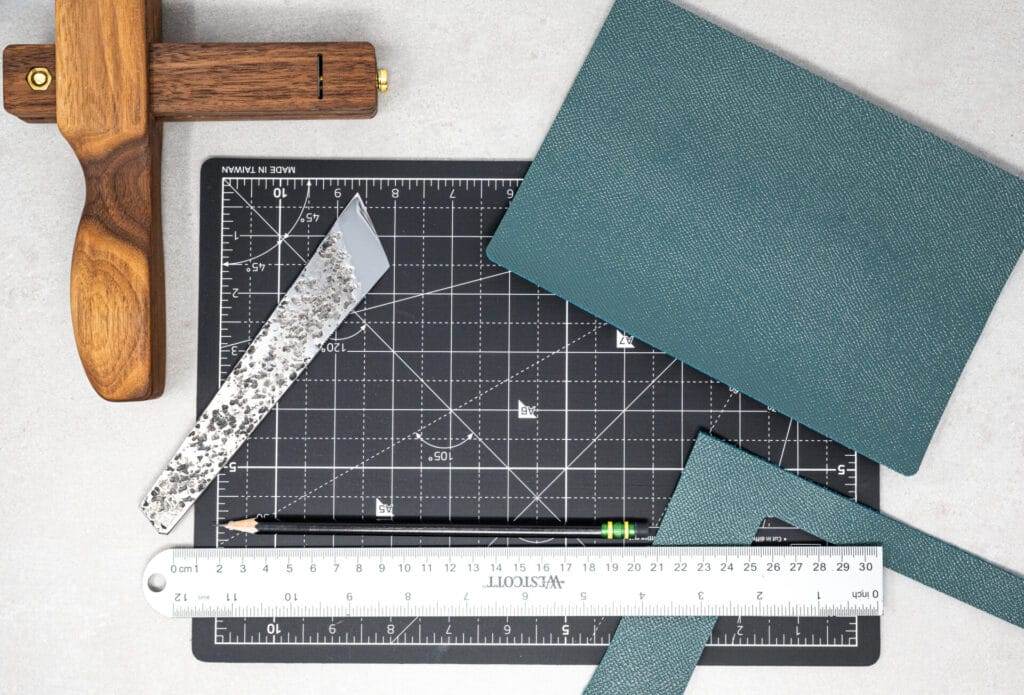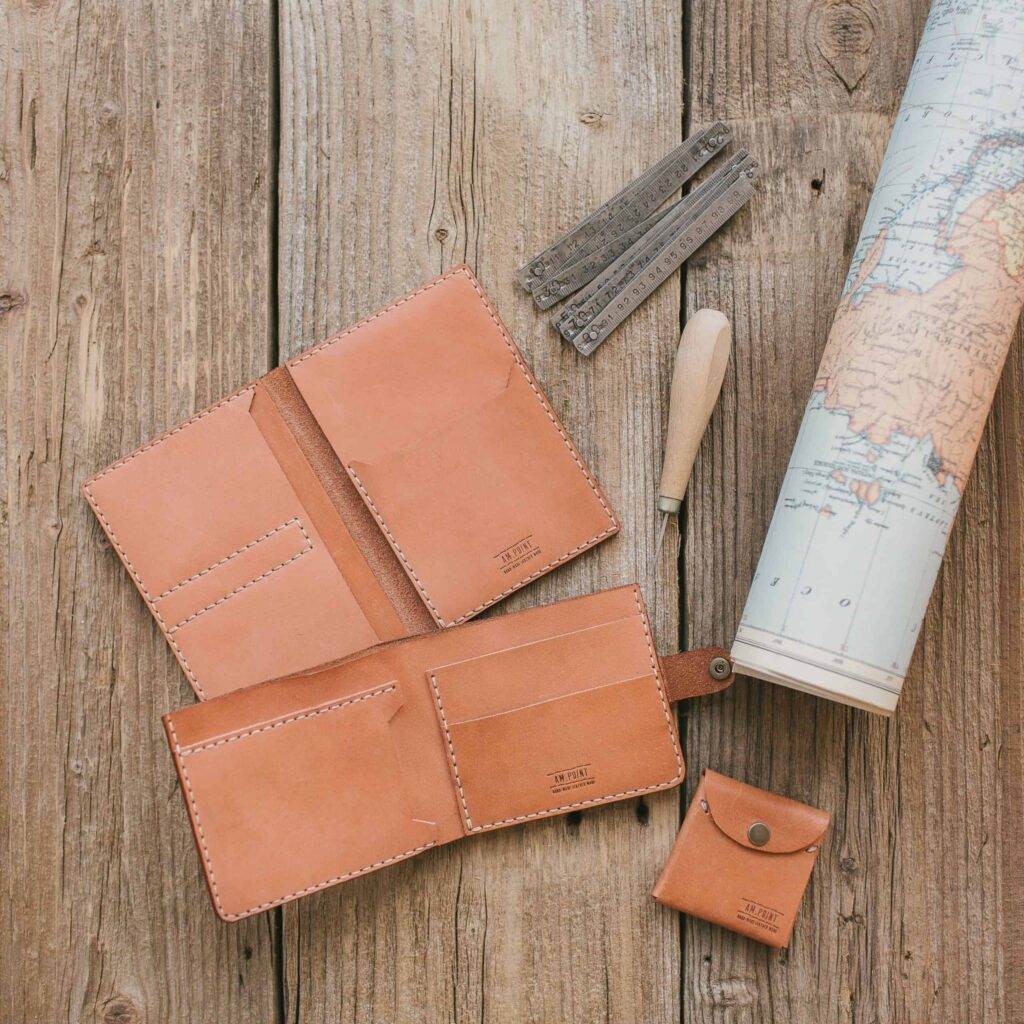The Art of Leathercraft Beveling
Beveling is a fundamental technique in leathercraft that enhances the aesthetic appeal and functionality of leather projects. At its core, beveling involves trimming the edges of leather pieces at an angle, creating a smooth transition from the top surface to the edge. This process not only improves the visual quality of the leather but also helps to prevent fraying and wear over time.
By softening the edges, beveling contributes to a more polished and professional look, making it an essential skill for any leatherworker. The beveling process can vary depending on the desired outcome and the specific project at hand. For instance, a subtle bevel may be used for delicate items like wallets or small pouches, while a more pronounced bevel might be appropriate for larger projects such as bags or belts.
Understanding the nuances of beveling allows artisans to tailor their approach to suit the unique characteristics of each piece, ensuring that the final product meets both functional and aesthetic standards. As such, mastering this technique is crucial for anyone looking to elevate their leathercraft skills.
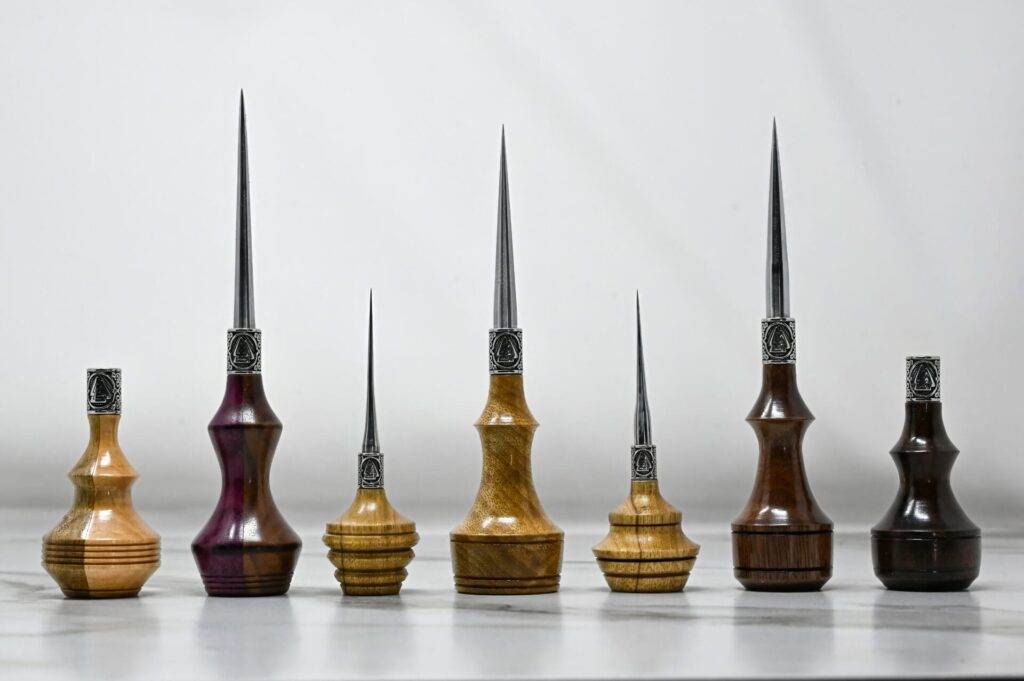
Key Takeaways
- Beveling is a process of creating a sloped edge on leather to add depth and dimension to the piece.
- Essential tools for beveling include a beveling tool, mallet, cutting mat, and leather conditioner.
- Techniques for beveling leather include holding the tool at a 45-degree angle and using consistent pressure.
- Creating depth and dimension with beveling involves using different sizes of beveling tools and experimenting with angles.
- Common mistakes to avoid when beveling include using too much pressure, not conditioning the leather, and not practicing on scrap pieces first.
Essential Tools for Beveling
To achieve precise and clean bevels, a few essential tools are necessary. The most important of these is a beveling tool, which comes in various shapes and sizes. These tools are designed specifically to create angled edges on leather, allowing for consistent results across different projects.
A good quality beveling tool will have a comfortable grip and a sharp edge to ensure smooth operation. Additionally, having multiple sizes on hand can be beneficial, as different projects may require varying degrees of bevel depth. In addition to beveling tools, other accessories can enhance the beveling process.
A cutting mat or a sturdy work surface is essential to protect both the tools and the leather during the beveling process. A ruler or straight edge can help guide cuts and ensure uniformity, while a mallet can be used to apply even pressure when using certain types of beveling tools. Finally, a good quality leather conditioner or finish can help protect the beveled edges and maintain their appearance over time.
By equipping oneself with the right tools, leatherworkers can achieve professional results in their beveling endeavors.
Techniques for Beveling Leather
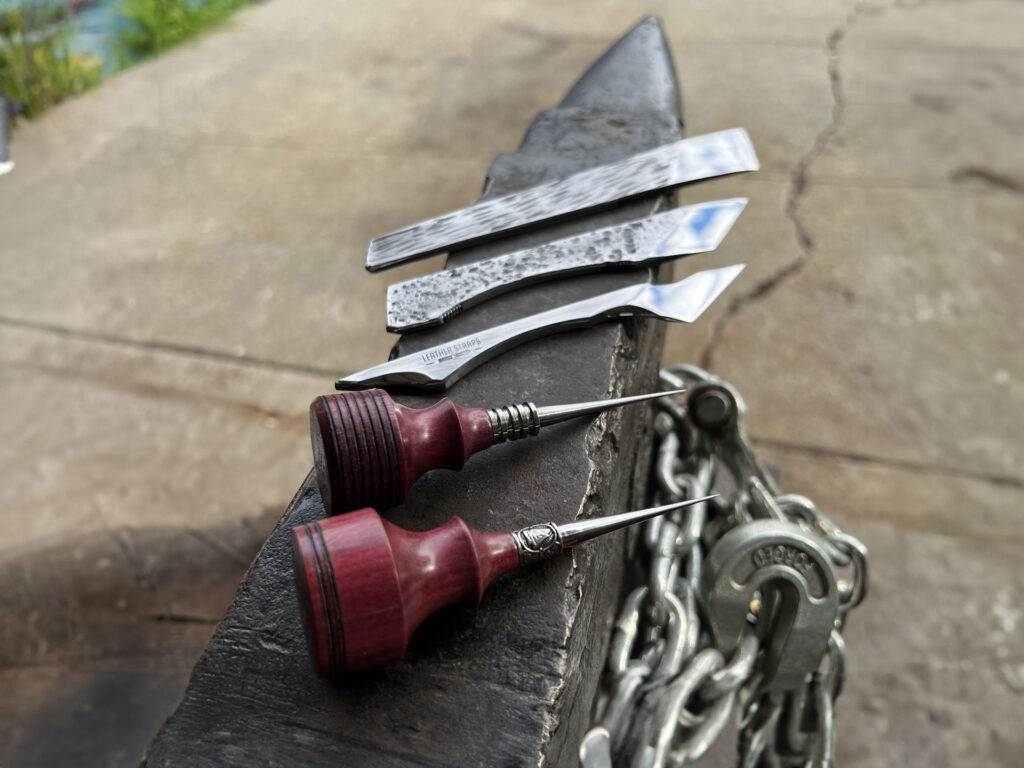
There are several techniques that leatherworkers can employ when beveling edges, each offering unique benefits and results. One common method is the use of a hand-held beveling tool, which allows for greater control over the angle and depth of the bevel. This technique is particularly useful for intricate designs or when working with thicker leather, as it enables artisans to navigate curves and corners with precision.
To use this method effectively, it’s important to maintain a steady hand and apply consistent pressure throughout the process. Another technique involves using a rotary tool equipped with a beveling attachment. This method can significantly speed up the beveling process, especially for larger projects or when working with multiple pieces of leather.
While it may require some practice to master, a rotary tool can produce clean and uniform bevels in less time than traditional hand methods. Regardless of the technique chosen, it’s essential to practice on scrap pieces of leather before tackling a final project. This allows artisans to refine their skills and develop a feel for how different tools interact with various types of leather.
Creating Depth and Dimension with Beveling
Beveling is not just about creating smooth edges; it also plays a crucial role in adding depth and dimension to leather projects. By varying the angle and depth of the bevel, artisans can create visual interest and enhance the overall design of their work. For instance, a deeper bevel can give the impression of a more substantial edge, while a shallower bevel may lend a more delicate appearance.
This ability to manipulate depth allows leatherworkers to express their creativity and personalize their projects. Incorporating depth into beveling can also enhance functionality. For example, when creating items that will experience wear and tear, such as belts or bags, deeper bevels can provide additional durability by reducing stress on the edges.
Furthermore, varying the bevel depth across different sections of a project can create a dynamic look that draws the eye and adds character. By understanding how to effectively use beveling to create depth and dimension, leatherworkers can elevate their craftsmanship and produce truly unique pieces.
Common Mistakes to Avoid When Beveling
While beveling may seem straightforward, there are several common mistakes that can hinder the quality of the final product. One frequent error is applying uneven pressure while using a beveling tool. This inconsistency can lead to jagged edges or uneven bevel depths, detracting from the overall appearance of the piece.
To avoid this mistake, it’s crucial to practice maintaining steady pressure throughout the beveling process and to regularly check for uniformity. Another common pitfall is neglecting to prepare the leather properly before beveling. Failing to cut clean edges or not conditioning the leather beforehand can result in difficulties during the beveling process.
It’s essential to ensure that all edges are trimmed neatly and that the leather is clean and free from debris before beginning work on bevels. Taking these preparatory steps can significantly improve the quality of the finished product and reduce frustration during the crafting process.
Incorporating Beveling into Different Leather Projects

Beveling is a versatile technique that can be applied across various leather projects, from simple accessories to complex designs. For smaller items like keychains or cardholders, subtle bevels can enhance their elegance without overwhelming their simplicity. In contrast, larger projects such as handbags or belts benefit from more pronounced bevels that add character and durability.
Understanding how to adapt beveling techniques to suit different types of projects is key to achieving successful results. Moreover, incorporating beveling into decorative elements can further enhance a project’s visual appeal. For instance, when creating intricate patterns or designs on leather surfaces, strategically placed bevels can highlight specific features and create a sense of depth.
This approach not only elevates the overall design but also showcases the artisan’s skill and attention to detail. By exploring how beveling can be integrated into various projects, leatherworkers can expand their creative horizons and produce stunning pieces.
Advanced Beveling Techniques
For those looking to take their beveling skills to the next level, advanced techniques offer exciting opportunities for creativity and innovation. One such technique involves layering multiple pieces of leather with varying bevel depths to create a three-dimensional effect. This method requires careful planning and execution but can result in striking designs that stand out from traditional flat pieces.
Another advanced technique is combining beveling with other leatherworking methods such as tooling or stamping. By incorporating these elements into beveled areas, artisans can create intricate designs that showcase both texture and depth. This approach not only enhances visual interest but also allows for greater expression of personal style within each piece.
As artisans become more comfortable with advanced techniques, they can push the boundaries of traditional leathercraft and explore new creative possibilities.
Tips for Mastering the Art of Leathercraft Beveling
Mastering the art of leathercraft beveling requires practice, patience, and attention to detail. One effective tip is to start with smaller projects that allow for experimentation without overwhelming complexity. This approach enables artisans to refine their skills gradually while building confidence in their abilities.
Additionally, keeping a dedicated practice piece on hand can provide valuable insights into what works best for different types of leather. Another important aspect of mastering beveling is seeking feedback from peers or mentors within the leatherworking community. Sharing experiences and techniques can lead to valuable insights that enhance one’s understanding of the craft.
Furthermore, staying informed about new tools and methods through workshops or online resources can inspire growth and innovation in one’s work. By embracing continuous learning and practice, artisans can elevate their skills in leathercraft beveling and create exceptional pieces that reflect their unique artistry.
FAQs
What is leathercraft beveling?
Leathercraft beveling is a technique used to create a smooth, rounded edge on leather. It involves using a beveling tool to shave off the sharp edges of the leather, resulting in a more polished and professional look.
Why is beveling important in leathercraft?
Beveling is important in leathercraft because it helps to enhance the overall appearance of the leather piece. It also helps to prevent the edges from fraying and adds a decorative touch to the finished product.
What tools are used for leathercraft beveling?
The primary tool used for leathercraft beveling is a beveling tool, which typically has a sharp, angled edge that is used to shave off the leather. Other tools that may be used include a mallet for striking the beveling tool and a cutting mat to protect the work surface.
What types of leather projects can benefit from beveling?
Beveling can be used on a wide range of leather projects, including belts, wallets, bags, and other accessories. It is particularly useful for projects where the edges of the leather are visible and need to be finished with a polished look.
Are there different types of beveling tools available for leathercraft?
Yes, there are different types of beveling tools available for leathercraft, including adjustable bevelers, flat bevelers, and edgers. Each type of beveling tool has its own unique features and is suited for different types of leather and projects.

